- Reasonably priced with pre-order deals
- MAX offers decent range in compact pack
- Slick installation
- AIR battery has limited range
- Basic e-bikes can be cheaper
- Complicated crowdfunding-style purchasing
Introduction
When we reviewed the Swytch e-bike conversion kit a couple of years ago, we loved the way it could electrify many a favourite old bicycle. But one feature that wasn’t so slick was the bulky battery sitting on the front, which was reminiscent of shopping basket. Since then, Swytch has streamlined its battery and fitted it inside a much smaller package. We revisited the Swytch via an upgrade kit for the e-bike we built in 2021.
New Battery Options
The new battery is described as “pocket-sized”, although you will need to have quite large pockets to accommodate either of the two versions. The AIR is 700g and the fatter MAX 1.1kg. Despite being much smaller than the original pack, the new AIR version still incorporates 90Wh of capacity, while the MAX has double the capacity at 180Wh. The latter is the same as the previous ECO pack, but there is no replacement for the PRO version we reviewed, which has 250Wh.
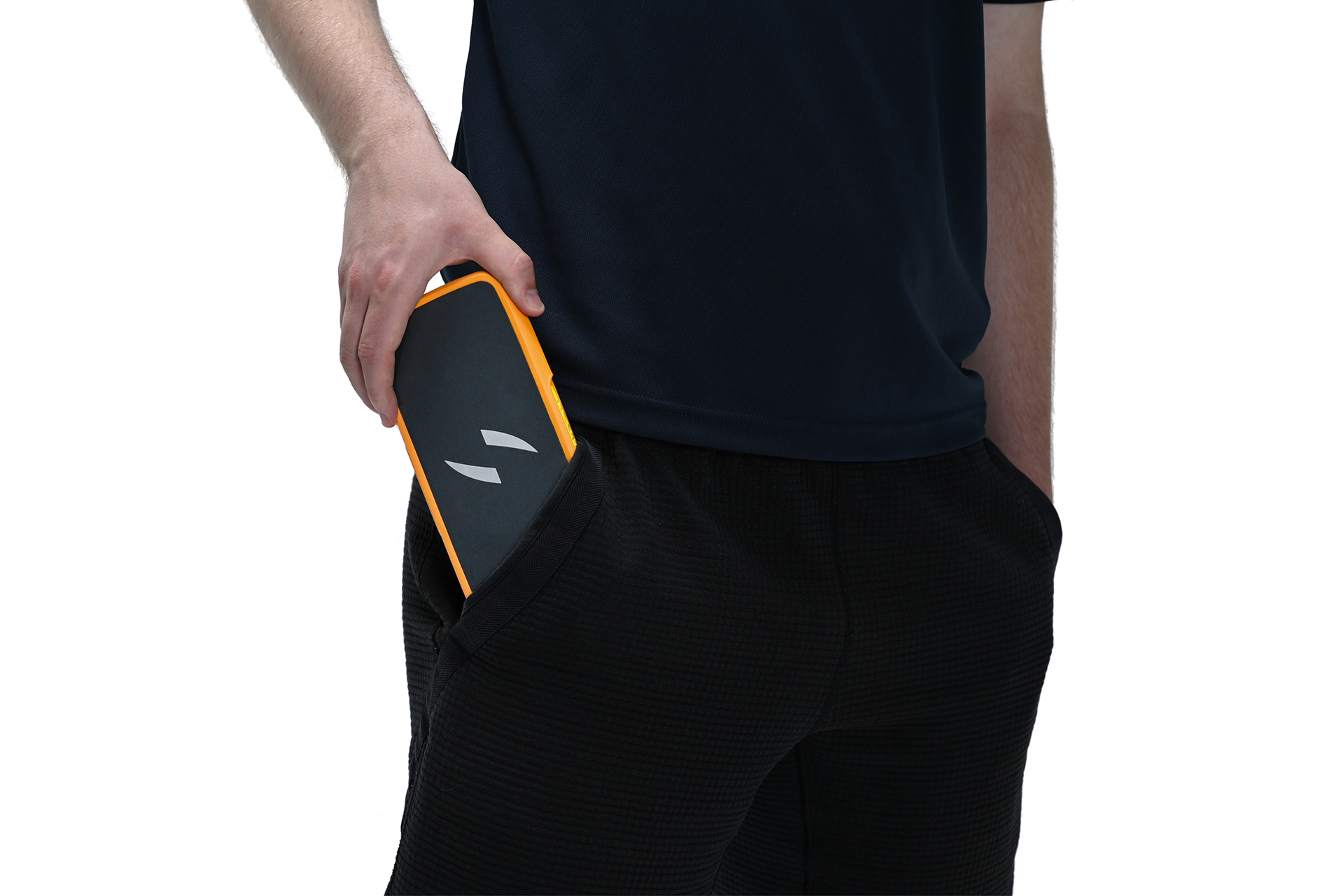
The PRO offered 31 miles (50km) of cycling range, so the maximum possible range has been reduced with the new packs. The MAX still gives you 18 miles (30km), but the AIR drops to 9 miles (15km). That will probably be enough for a lot of commutes, but the MAX is a more flexible option. Data from 2015 collected by Strava recorded the average commuting distance as 9.8 miles, so the AIR would probably need to be charged twice a day by the average commuter.
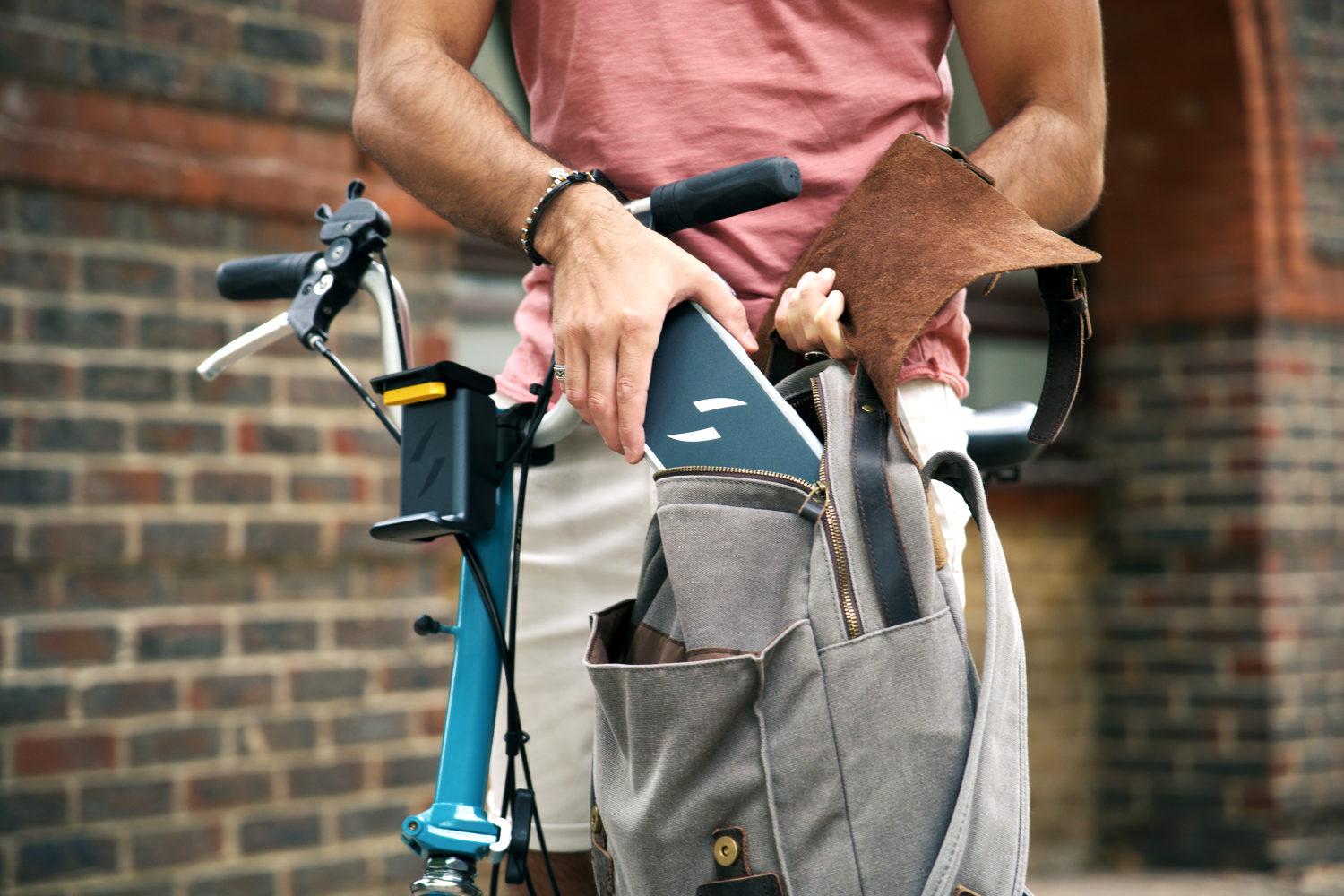
You can now order the Swytch as a full kit like the one we reviewed before, or an upgrade for existing customers. The full kit is available for a standard bike or a Brompton folding bike, as before. When you order the full kit, you must specify the diameter of your bike’s wheels, with options from 16in to 29in available. You then receive a replacement front wheel the right size for your bike with an integrated hub motor, plus the battery and requisite electronics and cabling. You can also optionally add a power throttle, inline or hydraulic brake sensors, and upgraded status screens.
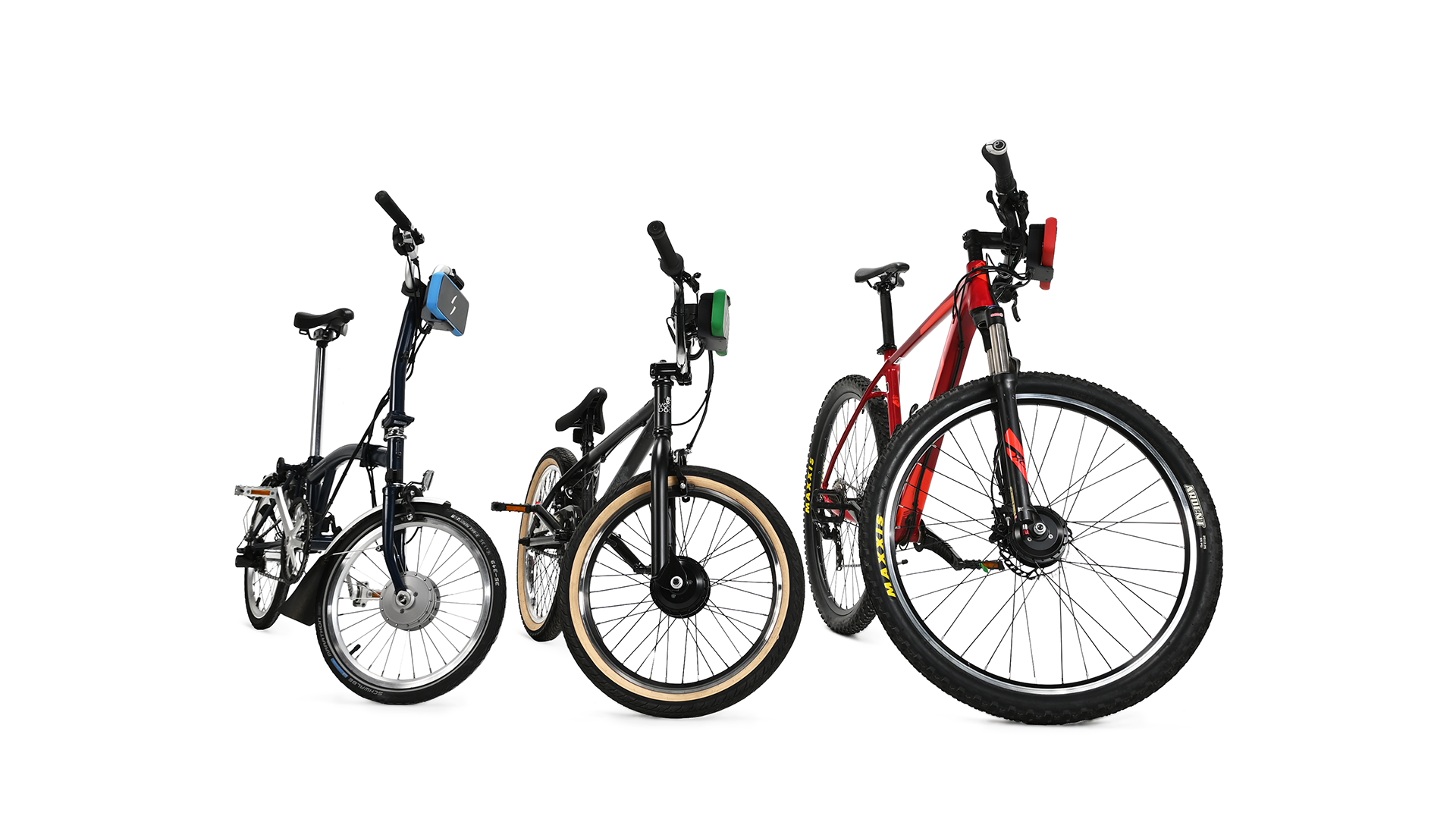
On Swytch’s website, pricing isn’t readily listed. Officially, the full AIR kit costs £999 and the MAX costs £1,299. The upgrade kit we tried would be £599 if you paid full price. These aren’t particularly good value when you can get a decent full e-bike for less. Of course, one of the complications with Swytch, which we have spent much time explaining to our readers and YouTube viewers after the original review, is the novel purchasing process. If you sign up for pre-purchase, you pay half price. You have to wait, but paying around £500 for the AIR, around £600 for the MAX or around £300 for the upgrade we tested seems much more reasonable.
The difficult bit when installing the Swytch kit is replacing the front wheel with the motorised version provided by Swytch. When the kit arrives, you need to remove the tyre from your original wheel and install this on the new wheel, which can be physically quite demanding, depending on the tyres your bike has. With the thick contoured tyres on the bike we used, this part of the process wasn’t easy. A pure road bike tyre made of thinner, less stiff rubber could be less strenuous.
You also need to take care installing the pedal sensor and follow the instructions closely. The optional brake sensor and throttle add-ons will make the installation even more involved. But instructions are detailed, so if you follow those closely the procedure is straightforward enough. For the full details of the motor and cabling installation process, check out our earlier review and watch our video below.
As we had done the motorised wheel installation already, replacing the battery wasn’t that onerous. We simply had to detach the wiring, unscrew the original battery mount, and replace it with the new one. However, the controls are no longer integrated into the battery pack, so we also had to mount the switch and status LCD elsewhere on the handlebars and route the wiring for that as well. The manual refers to a basic controller and display, but we were supplied with the OLED version, which is a more compact design and includes extra features like a speed display.
Installing the battery onto the bike mount is a slicker procedure than before. The pack slots into a ridge on the bottom of the mount, with the contacts on the top. The top of the mount then clamps down to secure the pack in place. It’s quick and easy to do. With the portability of the battery, the new Swytch is more ergonomic in every respect.
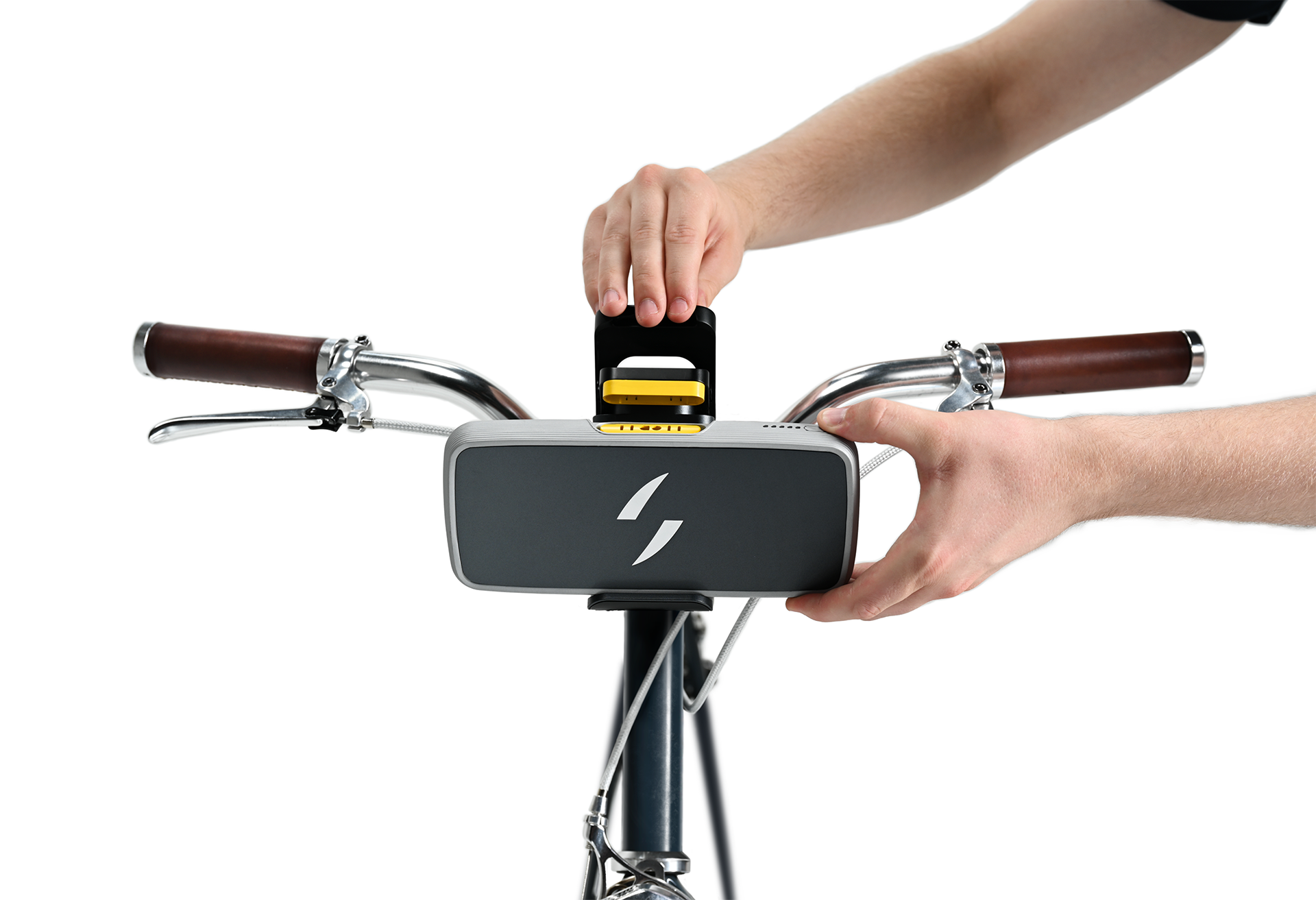
Previously, turning on the Swytch involved buttons on the battery pack itself, which also has simple status LEDs built in. While there is a button on the new battery that will fire up a row of LEDs to show current charge level, everything else is operated via the separate OLED controller and display. A yellow button on the top turns the system on.
Up and down arrows vary the system power, from zero to five. Pressing and holding the down button enables walk mode, running the motor at low speed to help you wheel the bike without riding it. Holding the up button turns on the light, which isn’t included on the AIR, unlike the PRO kit we reviewed originally. So this button press doesn’t actually do anything. The lack of an integrated light could be a problem, because the battery pack sits exactly where you will probably want to install a front light. There are alternative battery installation configurations, however, such as behind seat.
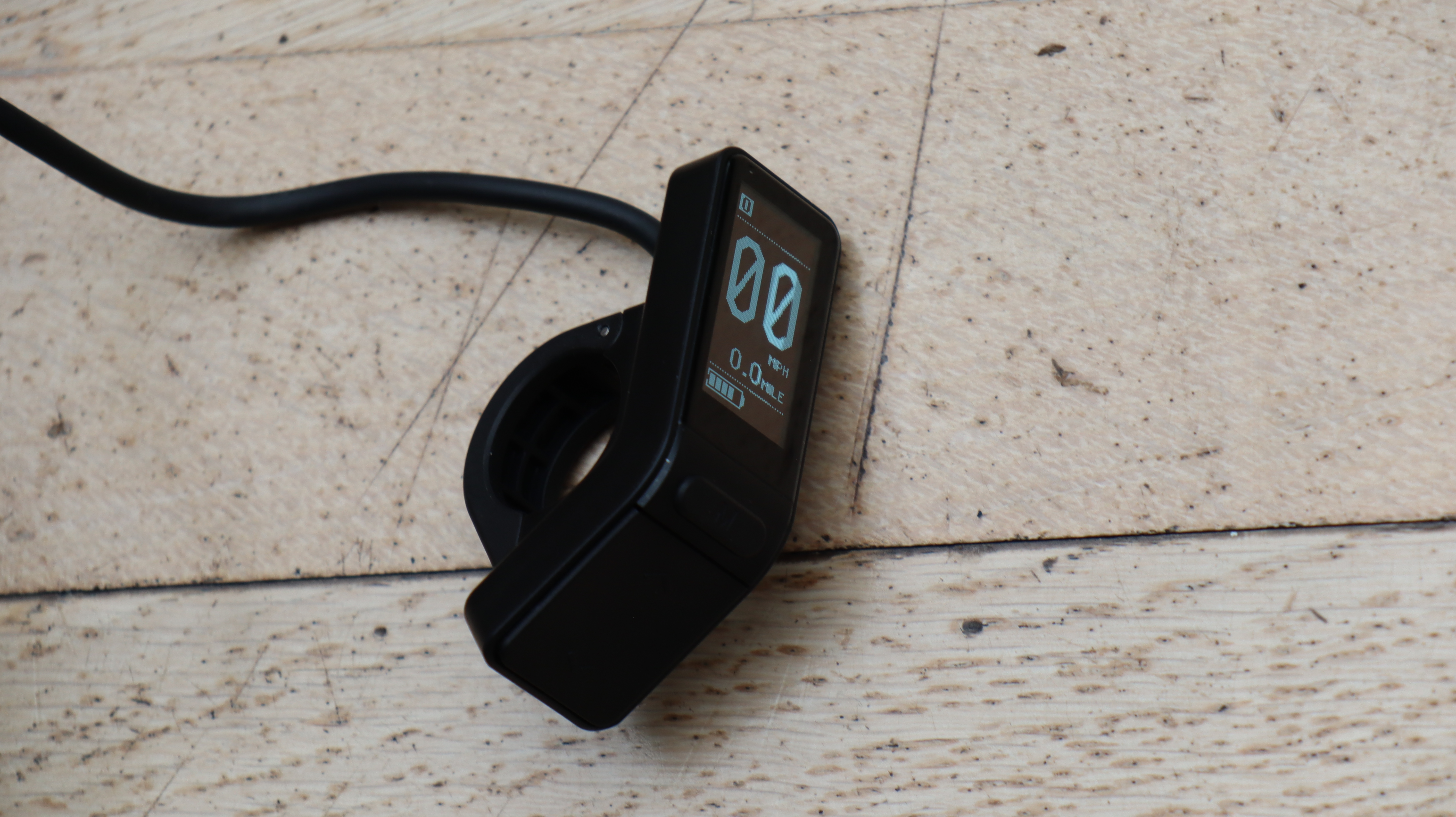
There’s an M button on the controller as well, and this cycles the display through speed with trip distance, speed with elapsed time, or average and max speed for the trip. Holding the M button down lets you reset the trip meter. However, if you press the M button within 10 seconds of turning the system on, the settings are shown. You can change the units from miles to kilometres, select a time for the system to turn itself off when idle, set the wheel size, limit the maximum speed for assistance (25kph in the UK), check the battery voltage and display system information including serial number, firmware, and hardware versions.
The Swytch motor provides the UK maximum 250W of motive power, with 40Nm of torque. The pedal detection process that activates the motor introduces a split-second latency compared to some e-bikes we have ridden, but it’s easy to get used to. With the OLED controller positioned near your thumb, you can easily vary the assistance power dynamically as you ride. This wasn’t so simple to do safely with the original Swytch pack.
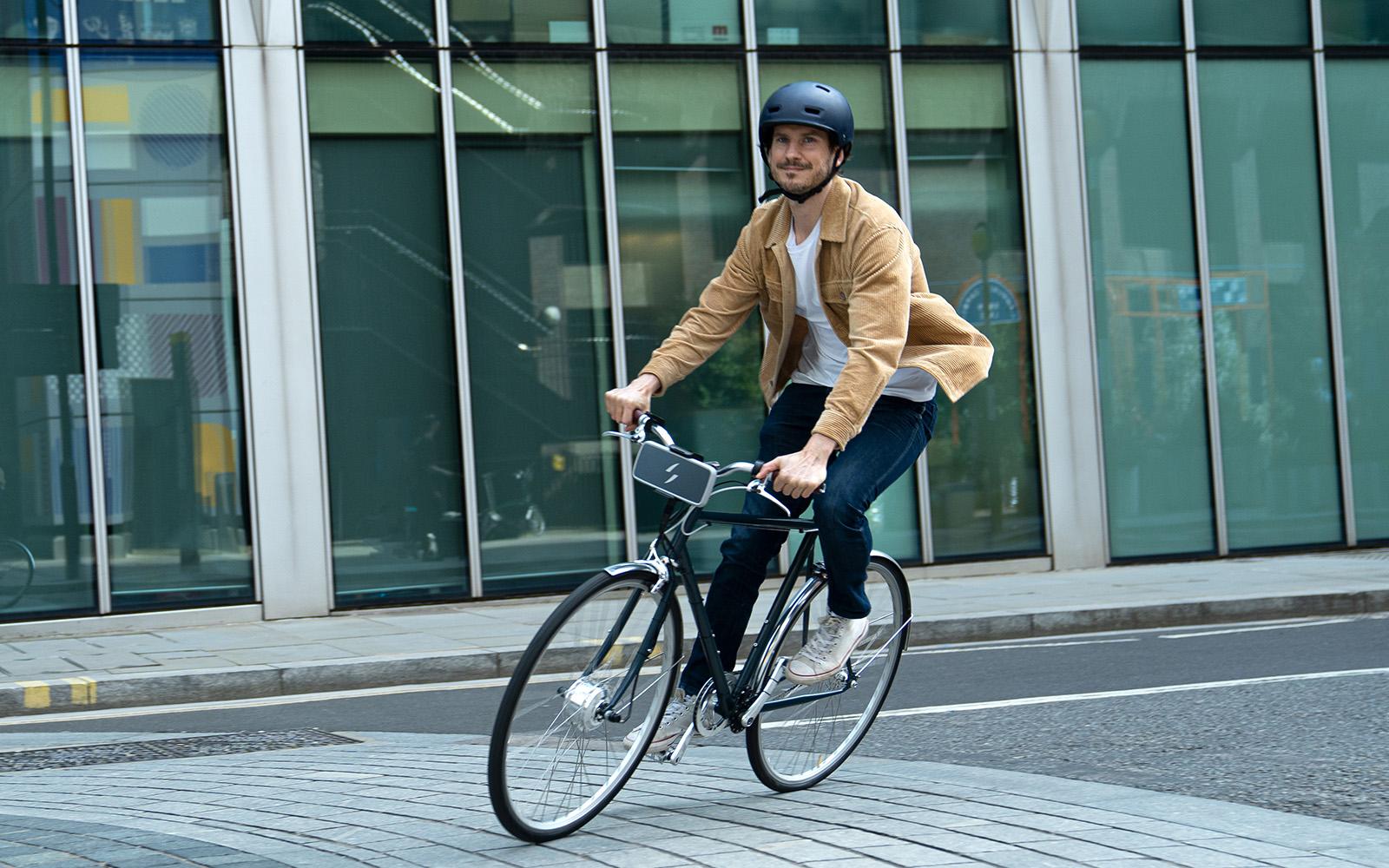
In general, the new kit isn’t significantly different from the original where the riding experience is concerned. However, having a lighter, less bulky battery on the front changes the steering dynamics. The original power pack weighed over 2kg, so the MAX is a little over half that and the AIR well under half. This makes the steering nimbler.
There are subtle differences in how the assistance augments your riding with different types of e-bike. With a front hub like the Swytch, you need to be aware that the front wheel is being driven in tight corners. Your pedalling is also not being assisted directly. With rear wheel hub or crank motors, such as used by the Mark2 X-Cross 450 and Mark2 Scrambler C respectively, the power directly affects pedalling directly, which is a more connected process. But the front hub motor of the Swytch is still effective does the job well.
As we have already mentioned, the new battery packs have reduced range compared to the original ones. The nine-mile range of the AIR seems a bit limited, but bear in mind that this is assisted miles, and when you’re not pedalling, or riding above the assisted speed, you’re not using the battery. We found that during light usage the AIR was adequate for much longer journeys than 9 miles.
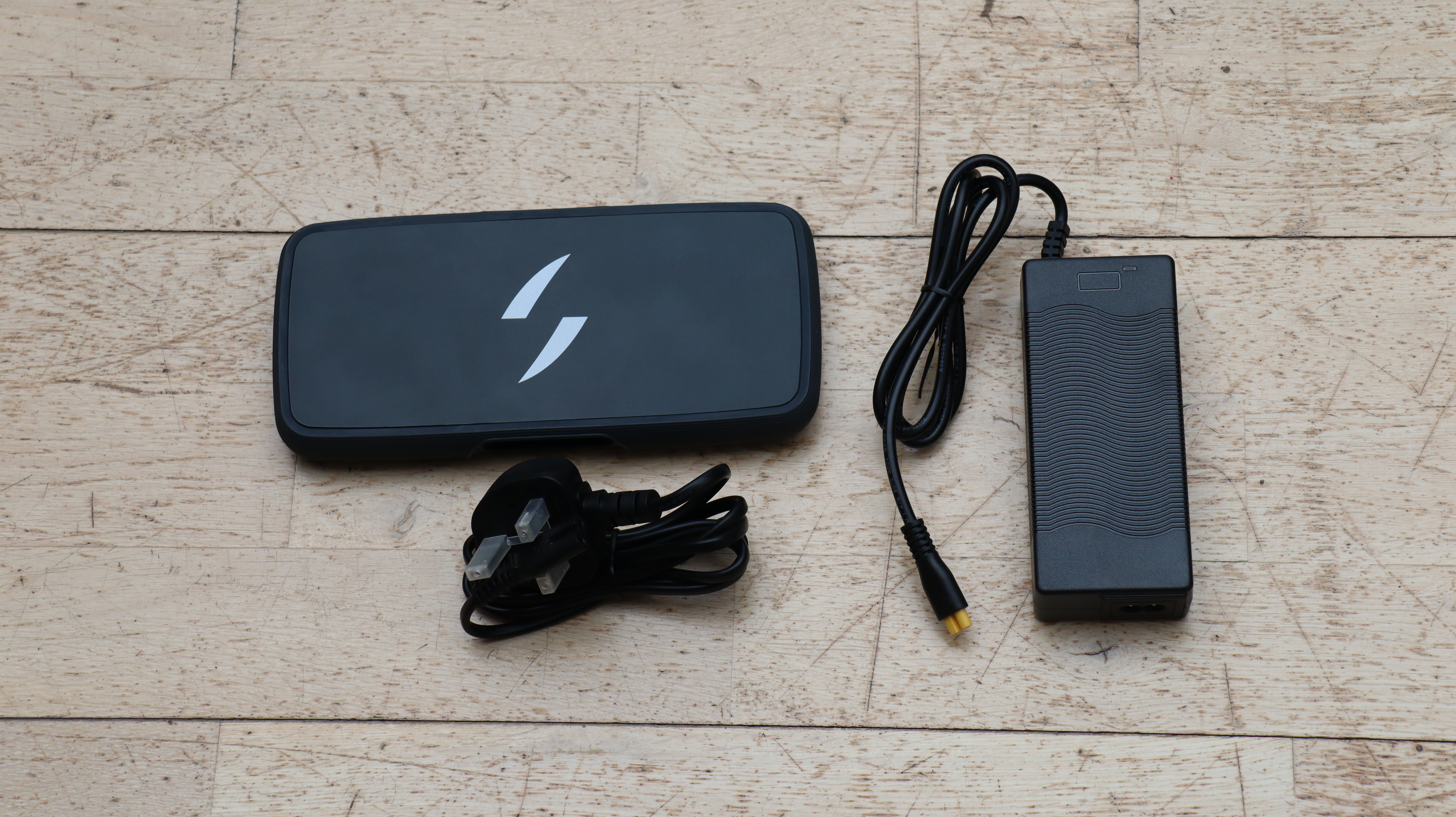
However, the AIR is more of “assistance when you really need it”, and if you want more permanent power, the MAX is the much more sensible choice. Although the latter’s 18-mile range is still well behind the 31 miles of the original PRO, most commuters and leisure riders will find that’s enough for much more than 18 miles of actual riding.
With the low weight and compact size, you’re going to find it easier to carry the pack and charger around to replenish the former using the latter in between journeys. The AIR supports charging at 2A, but with just 90Wh charging takes a mere hour to go from empty to full. The 180Wh MAX takes 2.5 hours. However, the MAX supports 3A charging as well as 2A, although that requires an optional extra 3A charger. This reduces charging time to 1.5 hours. So it is entirely realistic to recharge either battery during breaks between legs of a longer journey. Even with the energy crisis, 90 or 180Wh of power will barely cost anything, too.
There was nothing intrinsically wrong with the functionality of the original Swytch kit. In fact, we loved the concept, particularly if you have beloved bike such as an expensive Brompton you are familiar with and want to keep riding. Now the aesthetics have been significantly improved, albeit at the expense of range, it’s an even more tempting proposition, and riding dynamics are improved. Just make sure you choose the cheapest pre-order option when purchasing and be prepared to wait a few weeks.
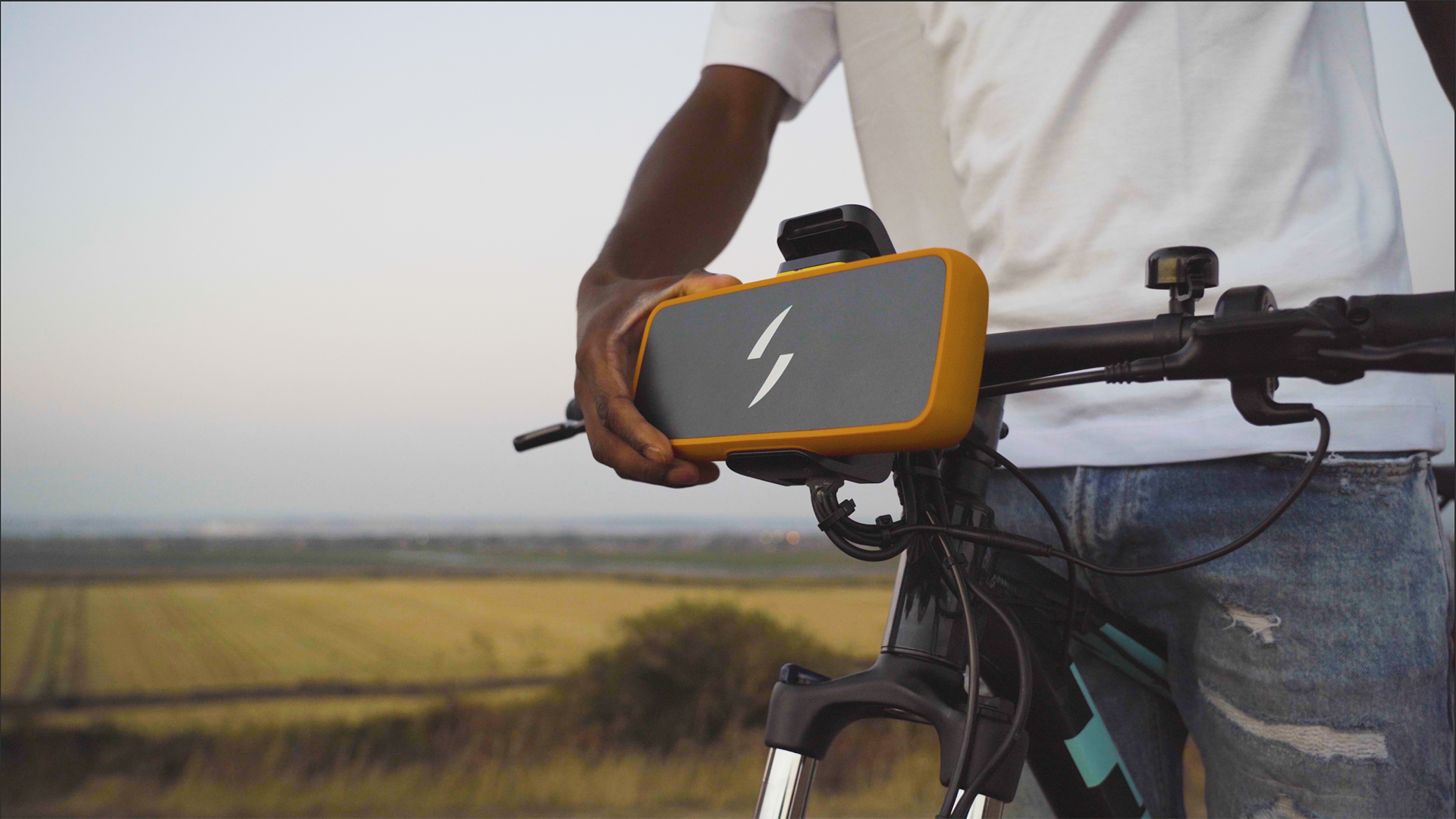
Check out our earlier review of the Swytch e-bike Conversion Kit for more details of installation and the riding experience.
To place your order follow this link to the Swytch website.
Read our interview with Swytch founder Oliver Montague here.
Key Specifications
| Price: | AIR: £999; MAX: £1,299; Upgrade £599 (but 50% off with preorder signup) |
| Range: | AIR: 15km (9 miles); MAX: 30km (18 miles) |
| Charge time: | AIR: 1 hour; MAX: 2.5 hours (1.5 hours with 3A charger) |
| Battery: | AIR: 90Wh; MAX: 180Wh |
| Cost per mile: | Inconsequential |
| Top speed: | 15mph / 25kph (default) |
| Power: | 250W / 40Nm |
| Wheels driven: | Front |



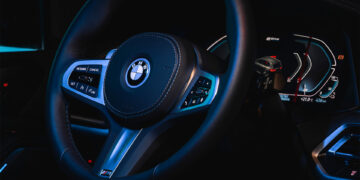

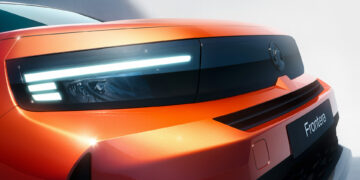


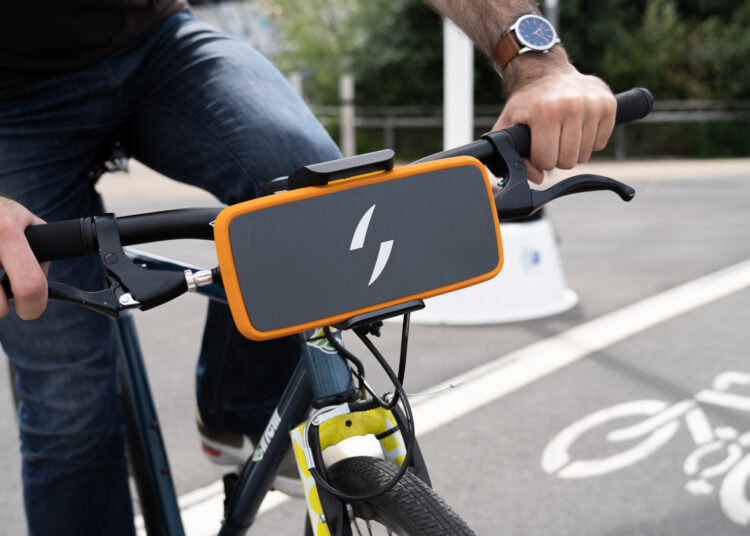
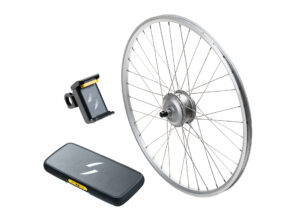
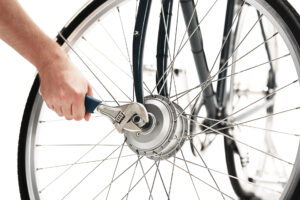
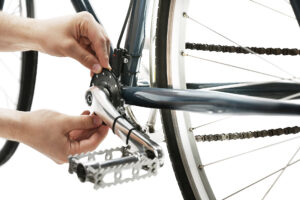
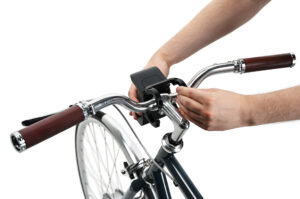











Discussion about this post